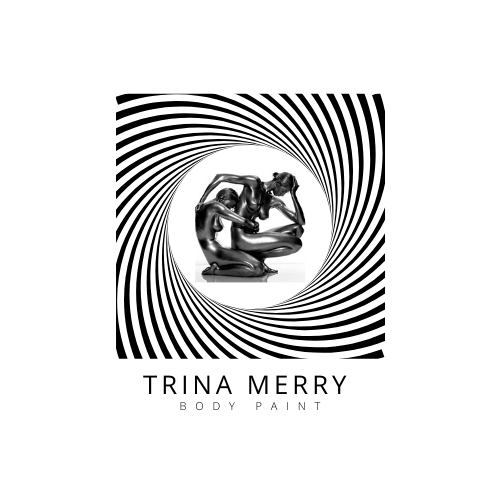Serious Health Risks to Artists:
Artists use solvents, isocyanates, pigments and other additives in paint and coatings. According to the EPA, Isocynates, for example, are the leading cause of occupational asthma in the United States. Toxic materials can exert their harmful effects immediately (acute effects) or after a long period of exposure (chronic effects). Minor acute effects such as nausea, lightheadedness, or irritation are generally brief and reversible, but acute effects can also be as severe as death.
Artists who have chronic exposure to certain chemicals and art materials are at greater risk for developing health problems, including cancer, leukemia and heart disease. An independent study by Barry A. Miller and Aaron Blair highlights the increased risk of exposure to carcinogens amongst artists.
Personal Safety
Artist should use personal safety measurements appropriate for their mediums such as respirators, spray booths, eye safety wear, rubber or latex gloves, and coveralls when spray painting.
Proper Ventilation:
Ventilation is one aspect of handling art materials properly that is vital to maintaining a healthy workspace. Unfortunately, studio ventilation is routinely ignored or misunderstood. It is often overlooked by artists who rely upon open doors or windows, an air-conditioning unit or a ceiling fan to circulate the air in their studios. In many cases, this is simply not enough. Without proper ventilation, chemical fumes can rise and pool at the ceiling, even when there is no detectable smell. This lingering cloud of chemicals can not only cause physical injury with chronic exposure, but potentially start a fire in your studio.
Know your materials. Each medium has its distinct hazard with different safety demands. Research the particular safety protocol, and ventilate properly. Make an inventory of the products in your studio. Keep the details and the contact information for your local Poison Control Center in a binder that is easily accessible in the studio.
Substitute hazardous materials with less toxic alternatives whenever possible.
If you can, enclose any harmful substances to create a barrier between yourself and the source. Spray boxes and booths with an outside exhaust system are excellent for glazing or airbrushing.Keep dust to a minimum cleaning surfaces religiously and by vacuuming and wet mopping rather than sweeping.
A healthy adult is more resilient to exposure than children, pregnant women, the elderly and small animals. If you work in a home studio, keep the area off limits to your family members and pets.
OSHA states that paint booths must be designed to filter out flammable contaminants and move air currents toward an exhaust for proper ventilation. There must be some sort of independent exhaust system in place to discharge outside of the building. The ventilation system must be running at all times during and after spraying. Exhausted air should not be recycled back into the spray booth as this can cause contamination.
The EPA has very specific guidelines regarding spray booth ventilation. Filters with at least 98% capture efficiency must be installed on all paint booths, and spray booths used for motor vehicle refinishing “must be fully enclosed and ventilated at negative pressure or up to 0.05 inches water gauge positive pressure for booths that have seals on all doors and other openings and an automatic balancing system.”
Risks of poor paint booth ventilation
There are many hazards associated with a paint booth that is not properly ventilated. Among them include:
Toxic fumes - Perhaps the most obvious consequence of a poorly ventilated spray booth is the risk of inhaling toxic fumes. Solvents and other chemicals used in the paint booth contain VOCs (volatile organic compounds) which, over time, can be harmful to your health and the health of your employees. Keeping your paint booth properly ventilated helps keep health and safety in check.
Fire - Due to the amount of hazardous materials and equipment used in a paint booth, fire is a very real risk. If paint fumes come in contact with electrical discharge or reactive chemicals, a fire can start in seconds. We do have fire suppression systems available for purchase, and they’re definitely worth the investment. However, it’s also important to take the necessary precautions to prevent fires from occurring in the first place — and that starts with proper ventilation.
Poor finish quality - A poor ventilation system will be less likely to capture dust, dirt and other contaminants, resulting in low-quality paint jobs. On top of that, having a poorly ventilated spray booth affects your employees’ ability to do great work. A well-ventilated spray booth will help you achieve higher quality finishes to reduce costs and cycle time and improve customer satisfaction.
Dilution Ventilation
Dilution ventilation (also known as cross-ventilation) introduces large amounts of clean air into the studio where it mixes with used air before being exhausted out. This method alters the balance of fresh air and used air so that contaminants are kept at a safe level. This can be accomplished with two windows on opposite sides of a room, and two industrial window fans. Similar to box fans, but more powerful, these types of industrial fans have sizes based on cubic feet per minute (CFM). Fans range in CFM from 20 to more than 2,500. Choose an industrial fan that produces as large an air volume as your space can handle. The fans can be purchased at big box stores like Home Depot, Lowe’s or Wal-Mart.
n a small studio using this system, the artist’s position is very important. Ideally, the fan pumping in fresh air will be behind the artist, blowing fumes away from the artist’s face and toward the fan exhausting the air outside in order to create a continuous stream of clean air for the artist to breathe in.
The dilution method is adequate in scenarios where there are fumes are of low toxicity, or there are very small amounts of moderately toxic vapors. This includes painting, black and white photo developing, and small amounts of adhesive, ink or shellac. It is not appropriate for controlling dust. Do not employ this method when using aerosol cans or spray paint. In these situations, and in environments where moderately or highly toxic substances are present, you will need to use local ventilation instead.
General exhaust ventilation systems usually consist of an exhaust fan mounted in the ceiling or wall, that pulls air out of the workroom and discharges it outdoors. Replacement air is brought into the work area by either natural means such s windows and vent. This is known as “dilution ventilation” because it dilutes vapors by rising them with cleaner room air. This is the preferred method for more airbrush body painters working with water based paints. This is also recommended for oil and acrylic painters, painters using inks and other similar mediums. These are not recommended as the sole source of ventilation when hazardous vapors such as alcohol based airbrush paints, acrylic paints, dusty mediums like charcoal or pastels or when aerosol paints are present.
Local Exhaust Ventilation
Local exhaust ventilation is the best method for removing large amounts of particles and vapors, and for controlling moderately toxic and highly toxic fumes. Through a hood placed over or very near to the source of pollution, this system exhausts contaminants and carries them away through ducts. Often the ducts will connect to an air cleaner that filters the air before pumping it outside. For high dust situations, where painting with pastels, grinding, plaster mixing and carving, sculpting, local exhaust ventilation is a necessity. Art processes such as silkscreen printing, acid etching, paint spraying, welding, woodworking operations and photographic development often use local exhaust ventilation to protect artists.
Hood design and use often determine the effectiveness of the system. Some hoods, such as spray booths, completely enclose the source. Others consist of slotted hoods, canopy hoods, or flexible or fixed duct pipe systems that are positioned adjacent to the source. Artists should position their work as close as possible to a slotted hood because the contaminant-capture efficiency drops dramatically with distance. When working within a hood that encloses the source, work as far back into the hood as practical. Regardless of its type, a hood must be strong enough to draw air and pull it away.
A local exhaust ventilation system removes chemicals and other contaminants at their source. These systems are recommended for controlling hazardous vapours because, if designed properly, they remove the vapors before workers are exposed to them. They consist of three basic components:
A hood (exhaust vent or special duct end) installed as close a possible to where work is performed, to capture the vapors;
Ductwork to transport the vapors from the good to outside the building; and
A fan located downstream of the hood to draw air away from the work area, through the hood and ductwork, and discharge it from the building.
Here’s an example of industrial grade ones you can purchase: https://www.paint-booths.com/category/woodworking-spray-booths.html
Recommended Use:
The EPA recommends using a combination of general and local ventilation systems simultaneously.

